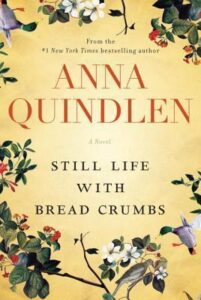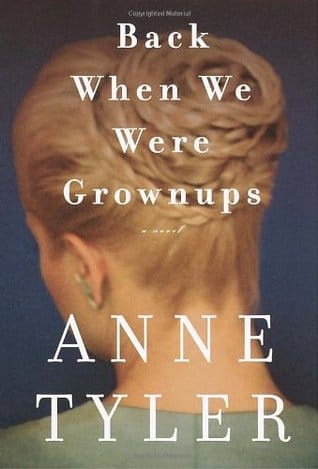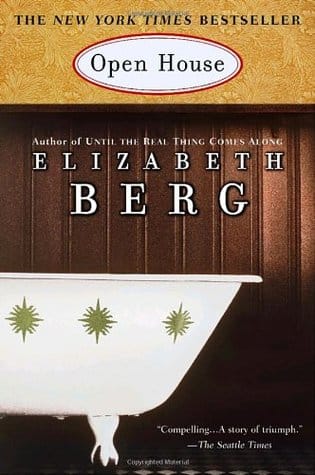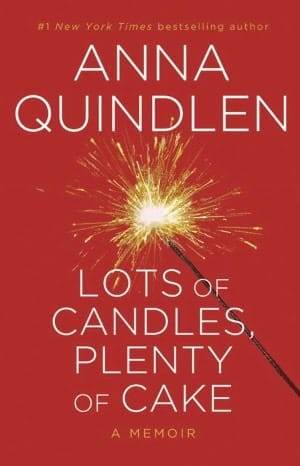Title: Still Life With Bread Crumbs
Author: Anna Quindlen
Page Count: 252 pages
Genre: Fiction
Tone: Moving, Romantic, Reflective
Summary:
Moving to a small country cabin, a once world-famous photographer bonds with a local man and begins to see the world around her in new, deeper dimensions while evaluating second chances at love, career, and self-understanding.
SPOILER WARNING:
These book discussion questions are highly detailed and will ruin plot points if you have not read the book.
The Library is happy to share these original questions for your use. If reproducing, please credit with the following statement: 2016 Mount Prospect Public Library. All rights reserved. Used with Permission.
1. How did you like Rebecca Winter as a character? Do you feel satisfied with how much you know about her? Are there any aspects of Rebecca’s situation that you especially relate to?
2. How does the third-person narration affect your impression of Rebecca? How different would the book have been had it been written from a first-person point of view?
3. What are Rebecca’s initial impressions of living in the country?
4. How did Rebecca’s marriage to Peter affect her? Despite it not having been an ideal match, what does she miss about being married?
5. How is Jim intelligent in ways that Peter isn’t? What are some other character traits that make Jim likable? What do Rebecca and Jim like about each another?
6. How did you respond to the character of Rebecca’s mother? Beatrice (Bebe) is described as being “as definite, as unyielding, as dark as the ungainly statue of Artemis” (p. 53). As a columnist/author of nonfiction, Quindlen has written candidly about the importance of motherhood as well as its joys and challenges – why do you think she created a chilly, unsupportive mother figure for Rebecca?
7. How does her father, Oscar, compare as a parent? How would you characterize Rebecca’s relationship with him? Why does she keep her move to the country from him?
8. How did you respond to the portrayal of Bebe’s dementia?
9. What do the secondary characters contribute to the book? Do you have any favorites?
10. In an interview published in The Washington Post (1-28-14), Quindlen said that Rebecca’s story was partially inspired by “how we live in New York City, about failing to see beneath the surface.” One of the themes in Still Life With Bread Crumbs is things (objects / people / experiences) not being what they are initially perceived to be. What are some examples of this?
11. A theme in much of Quindlen’s nonfiction pieces is the effect of losing her mother at a young age (19), and in particular how the loss influenced her appreciation for life and “the gift of getting older.” Like Quindlen, Jim lost his mother at a young age. What does this loss mean for his character and his worldview?
12. The book explores how Rebecca’s photography career took off after her Bread Crumbs photo, and yet “she mainly found her good work to be accidental, and immediate” (p. 78). Why did her photography become so important artistically for feminism?
13. Jim is upset with Rebecca for taking pictures of the crosses despite not knowing why they were there. Do you believe a photographer has a responsibility to understand what they are capturing with their photographs? Why / why not?
14. Rebecca thinks her father believes “photography was a second-rate artistic pursuit.” Some people do dismiss photography as an inferior art form, or as not art at all. What are your thoughts on this? What other types of creative expression are not held in high esteem?
15. Have you ever felt locked into an image of yourself, whether it was created by you or outside forces? (p. 173: “People froze you in place, Rebecca sometimes thought… More important, you froze yourself, often into a person in whom you truly had no interest. So you had a choice: you could continue a masquerade, or you could give up on it.”)
16. There is a particular life stage captured in this book, accepting that you are getting older but realizing there are still many possibilities ahead. Do you believe this book appeals more to readers past a certain age, or is there a broader potential audience?
17. Do you find the idea of reinventing yourself exciting or terrifying? How does the idea of control play into this?
18. At the end of the book, what does Rebecca like about her life and situation that she didn’t appreciate before?
19. Were there any lessons you learned from this book?
20. In By the Book: Writers on Literature and the Literary Life from the NY Times Book Review (ed. By Pamela Paul), Anna Quindlen writes “I have many poetry collections – that’s my version of self-help” (p. 163). Can Still Life With Bread Crumbs be seen as a form of self-help to its readers? Why or why not?
21. Quindlen is a self-described feminist writer and has covered women’s issues in her journalism (exploring topics of women’s rights, political climate for women, balancing career and family, and modern life for women). How does Still Life With Bread Crumbs contribute to the literature of contemporary women’s lives? How is Rebecca’s story unique to the experience of women?
22. In an interview with Bookgirl TV pocast, Quindlen remarks “a simple, ordinary existence is just about the best thing out there.” How does this novel reflect that belief?
23. With Still Life With Bread Crumbs, one of Quindlen’s goals was to write a love story. How much does the romance element factor into this novel? She also wanted to write a book with a happy ending. Do you believe the conclusion of Still Life succeeds?
24. There are some interesting stylistic choices in the book. Several scenes loop backward in time to a prior scene that the character recalls. How did you respond to these multiple time shifts in certain scenes? Does the circular patterning make you think of anything theme-wise?
25. In a direct reference to time, the phrase “but that was later” is a frequent comment at end of scenes. What did you think of this pattern/repeated phrase?
26. Related to this, some chapters go far back in time (Thanksgiving 1956, for example) or way forward (one of the White Cross Series reviews). What did you think of this? What do you think the author was trying to achieve and do you think she succeeded?
27. Quindlen has stated that the theme of running out of money has been rarely explored in novels. What do you think of the author’s choice to include specific dollar figures in Rebecca’s ruminations, when she does mathematical calculations in her head?
Want help with your book discussion group? Check out tips, advice, and all the ways the Library can help support your group!
OTHER RESOURCES:
- Lit Lovers’ Discussion Questions
- Video Interview with Anna Quindlen on BookGirlTV
- New York Times book review, “Second Shot” by Joanna Rakoff
- Washington Post interview with Carole Burns
- Transcript of NPR interview (2-2-14)
Readalikes:
- Back When We Were Grownups by Anne Tyler
- Open House by Elizabeth Berg
- Lots of Candles, Plenty of Cake by Anna Quindlen





